
After ascending Marple locks, Marple Junction at the summit level of the Peak Forest Canal is reached by climbing through Top Lock, (lock 16). The entrance to the Macclesfield Canal (opened in 1831) is on the right and Top Lock House is on the left. This was once the home of the Jinks family who were boat builders. Adjacent to the house there is now a mooring basin (Marple Basin) that originally accessed the top of Samuel Oldknow's lime kilns by the Higher Private Branch to Lime Kilns.
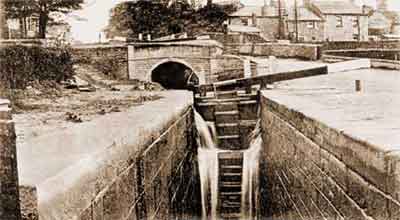
Lock 16 viewed from lock 15 with Marple Junction beyond, c.1920.
Marple Wharf, on the Macclesfield Canal, is beyond the buildings in the background on the right.
Junction Side Bridge carries the towpath of the Upper Peak Forest Canal over the Macclesfield Canal and through the bridge, on the right, is Marple Wharf with its canal offices, warehouse and yard. Boats were once gauged here to determine their displacement when they were carrying known weights.
Over the period 2 Feb 1926 to 6 Jun 1935, some 6,653 boat movements were recorded by the toll office at Marple. Of these, 4,231 boats were loaded and 2,422 were light, i.e. empty. The total weight carried was 61,662 tons, which meant that the average boatload was 14.57 tons. A major drawback was that cargos could not often be found for returning boats and they had to return light, thus generating noincome.
By the warehouse on Marple Wharf there was formerly a stop lock with a small rise in level to the Peak Forest Canal. Initially, the two canals were owned by separate companies and the purpose of this lock was to prevent the loss of water from the older Peak Forest Canal to the younger Macclesfield Canal. When the two canal companies came under the control of the Manchester, Sheffield and Lincolnshire Railway Company this lock served no useful purpose and the gates were removed. However, the location of this lock is still clearly visible.
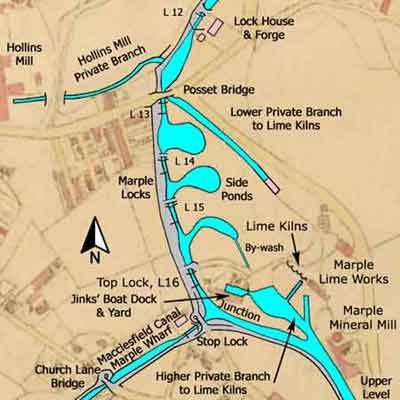
Top Lock & Marple Junction
Peak Forest Canal
Grid Ref: SJ 961 885
Tithe Map: 1850, Ref: EDT 262/2
Courtesy: Cheshire Archives & Local Studies
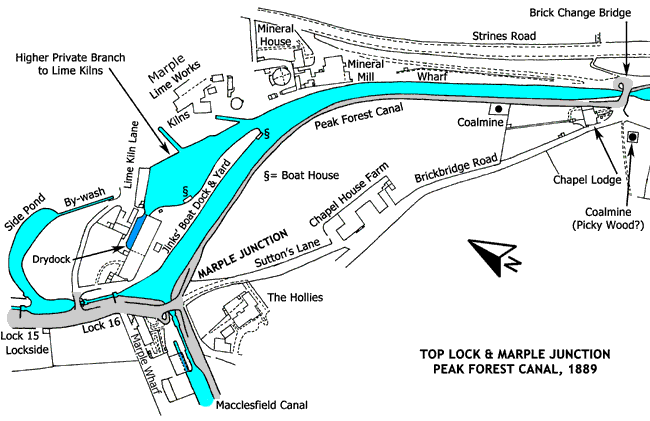
James Jinks
James 'Jimmy' Jinks was born at Odd Rode, Cheshire, in 1802/03. Odd Rode is close to the southern terminus of the Macclesfield Canal, so it is possible that
he served his boat-building apprenticeship somewhere in the vicinity of the junction of the Macclesfield and Trent & Mersey Canals. Afterwards, he moved to
Marple where, in 1840, he established his own business at Top Lock.
By 1881, the widowed 78-year old James was still working and he was living with his family at Chapel House Farm, which overlooked his boatyard and the adjoining Marple Lime Works and Mineral Mill. His son, Richard, was in business with him and he was employing five men at the time.
The widowed 71-year-old Mary Tymm was lodging with him and she was the mother of Jesse and Wright Tymm who owned Marple Lime Works and Mineral Mill.
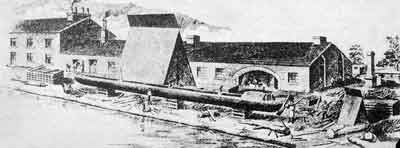
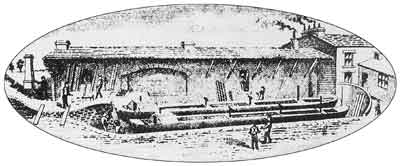

James Jinks, Boatbuilder
Top left: Residence & boatyard.
Top right: Drydock.
Left: Billhead.